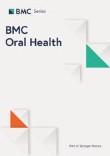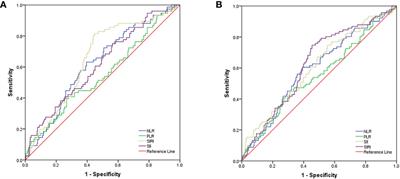|
Αρχειοθήκη ιστολογίου
-
►
2023
(256)
- ► Φεβρουαρίου (140)
- ► Ιανουαρίου (116)
-
►
2022
(1695)
- ► Δεκεμβρίου (78)
- ► Σεπτεμβρίου (142)
- ► Φεβρουαρίου (155)
-
►
2021
(5507)
- ► Δεκεμβρίου (139)
- ► Σεπτεμβρίου (333)
- ► Φεβρουαρίου (628)
-
▼
2020
(1810)
-
▼
Δεκεμβρίου
(544)
-
▼
Δεκ 10
(34)
- Oxytocin in young children with Prader‐Willi syndrome
- Association of urinary free cortisol with bone for...
- SRY‐negative 46,XX testicular/ovotesticular DSD: l...
- Classification and morphology of middle mesial can...
- Peroneal Flap – How to Harvest and Clinical Apprai...
- Inferior Alveolar Nerve Reconstruction in Extensiv...
- Technical Principles and Clinical Workflow of Tran...
- The human melanocyte and melanoblast populations p...
- Efficacy and Safety of Mesenchymal Stem Cell Clust...
- Efficacy and Safety of Pembrolizumab (MK-3475) Plu...
- Pilot Study of a 1-Millimeter Resolution Clinical ...
- Systemic Inflammation Response Index Is a Predicto...
- Retention and survival rate of etanercept in psori...
- The Goldman‐Fox Syndrome: Treating and Preventing ...
- Evaluation of lens clarity in children with atopic...
- Antimicrobial photodynamic therapy in the treatmen...
- Increased risk of depression and impairment in qua...
- Scrotal erythema and geographic tongue subsequent ...
- Dermoscopic characterization of guttate psoriasis,...
- Skin manifestations in SARS‐CoV‐2 infection
- Topical and Systemic Retinoids for the Treatment o...
- Evaluation of Oral Isotretinoin Effects on Hearing...
- Losartan for treatment of epidermolysis bullosa – ...
- investigation of thyroid blood tests and thyroid u...
- Rituximab in Practice: Clinical Evaluation of Pati...
- The Most Common Allergens
- The risk for severe COVID 19 in patients with auto...
- Hypertrichosis and hair repigmentation in patients...
- Adalimumab in the management of hidradenitis suppu...
- Unsuccessful palliative treatment of extraocular s...
- Ectropion surgery might not be a long‐term solutio...
- Can Rituximab Be Used In The Treatment Of Pemphigu...
- The additive efficacy of therapeutic low‐intensity...
- Safety and efficacy profile of oral cyclosporine v...
-
▼
Δεκ 10
(34)
- ► Σεπτεμβρίου (32)
- ► Φεβρουαρίου (28)
-
▼
Δεκεμβρίου
(544)
-
►
2019
(7684)
- ► Δεκεμβρίου (18)
- ► Σεπτεμβρίου (53)
- ► Φεβρουαρίου (2841)
- ► Ιανουαρίου (2803)
-
►
2018
(31838)
- ► Δεκεμβρίου (2810)
- ► Σεπτεμβρίου (2870)
- ► Φεβρουαρίου (2420)
- ► Ιανουαρίου (2395)
-
►
2017
(31987)
- ► Δεκεμβρίου (2460)
- ► Σεπτεμβρίου (2605)
- ► Φεβρουαρίου (2785)
- ► Ιανουαρίου (2830)
-
►
2016
(5308)
- ► Δεκεμβρίου (2118)
- ► Σεπτεμβρίου (877)
- ► Φεβρουαρίου (41)
- ► Ιανουαρίου (39)
Πέμπτη 10 Δεκεμβρίου 2020
Oxytocin in young children with Prader‐Willi syndrome
Association of urinary free cortisol with bone formation in patients with mild autonomous cortisol secretion
|
SRY‐negative 46,XX testicular/ovotesticular DSD: long‐term outcome and early blockade of gonadotropic axis
|
Classification and morphology of middle mesial canals of mandibular first molars in a southern Chinese subpopulation: a cone-beam computed tomographic study
|
Peroneal Flap – How to Harvest and Clinical Appraisal for Head and Neck Reconstruction
|
Inferior Alveolar Nerve Reconstruction in Extensive Mandibular Resection: Technical Notes
|
Technical Principles and Clinical Workflow of Transcranial MR-Guided Focused Ultrasound
|
The human melanocyte and melanoblast populations per unit area of epidermis in the rete ridge are greater than in the inter‐rete ridge
|
Efficacy and Safety of Mesenchymal Stem Cell Clusters in Patients With Critical Limb Ischemia
|
Efficacy and Safety of Pembrolizumab (MK-3475) Plus Lenvatinib (E7080/MK-7902) Plus Chemotherapy in Participants With Advanced/Metastatic Human Epidermal Growth Factor Receptor 2 (HER2) Negative Gastric/Gastroesophageal Junction (GEJ) Adenocarcinoma (MK-7902-015/E7080-G000-321/LEAP-015)
|
Pilot Study of a 1-Millimeter Resolution Clinical PET System in Head and Neck Cancer Imaging
|
Systemic Inflammation Response Index Is a Predictor of Poor Survival in Locally Advanced Nasopharyngeal Carcinoma: A Propensity Score Matching Study
|




